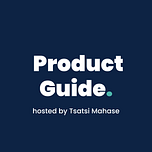Hi, everyone. Today, I'd like to walk you through what I've learned about product discovery and validation during my 15 years of building software products. Whether you're a startup founder or an established business looking to innovate, this guide will help you avoid common pitfalls and build something people truly want.
Before we jump into the technical aspects, let's start with the most important lesson in product development. Understanding the problem before falling in love with the solution. Let me share a real example from my own experience. When I first started looking for accommodation while I was traveling, I always felt frustrated by expensive hotel rooms that made me feel like just another tourist.
That's exactly what Airbnb understood so well. They didn't just build another booking website. They solve the real human need for affordable homing places to stay. This deep understanding of what travelers actually want made their solution special. Problem-first thinking is essential for creating truly valuable products.
Now that we understand the importance of problem-first thinking, put on your detective hat. It's time to master the art of customer interviews. By engaging directly with customers, you gather valuable insights and build lasting relationships by showing them you're committed to solving real problems.
Here are some essential tools when it comes to customer interviews. Ask open-ended questions about daily challenges. Focus on listening rather than selling. Record compensations for deeper analysis with their permission, of course. Look for patterns in customer frustrations. The key here is to gather authentic insights through active listening, documentation, and pattern recognition rather than rushing into pitching solutions.
With your customer insights in hand, let's analyse the competitive landscape. Start by identifying direct and indirect competitors. Then, systematically evaluate their strengths and weaknesses in product features, pricing strategies and business models, marketing approaches and target audience, customer reviews and pain points.
I know it's counterintuitive, but having competitors is actually good news. It validates that there's a real market demand for what you're building. Your goal isn't to be completely different. It's to be meaningfully better by tracing gaps in competitor offerings and focusing on what matters most to your customers.
This leads us to our next important step. Building on our market analysis, let's craft your products. Why should I care statement? Remember this golden rule. People don't buy features, they buy benefits. Think about it. People don't buy a mattress because of memory form technology. They buy a good night's sleep.
To develop a compelling value proposition, try these proven techniques. Use the jobs-to-be-done framework. Identify what tasks customers are trying to accomplish. Create a value proposition canvas to map customers’ pains and gains to your product features. Test different value statements with real customers through A B testing.
Now that we've defined our unique value in the market, let's explore just how big that market opportunity is. Knowing your market size is essential. for making informed business decisions and attracting investors. It helps you set realistic goals and allocate resources effectively, and identify growth opportunities.
Let's quantify our opportunity using the market sizing funnel. At the top, we have TAM, which is Total Addressable Market. Everyone who could potentially use your product. SEM which is a Serviceable, Addressable Market. People you can realistically reach. SOM which is the serviceable, obtainable market. Your likely market share.
With our market size understood, now comes the exciting part. Putting your assumptions to the test. Create simple experiments to validate your biggest assumptions. Build a landing page to test interest. Create simple prototypes for LE feedback. Set clear success metrics before starting. Welcome all feedback, even negative responses.
They help us learn and improve. Fun fact, I'm actually using this exact technique right now with my 90 day program. Check out the link in the description to see how I'm validating my own value proposition in real time. Or better yet, join the program. Now that you've validated your core assumptions, it's essential to develop a solid technical strategy.
This phase can make or break your product. A well-planned technical foundation ensures smooth scaling, efficient development, and long-term sustainability. Number one, choose technology that matches your specific needs, not just strengths. Plan architecture with scalability in mind. Break development into manageable pieces of work, often referred to as sprints.
Implement testing strategies from day one. The key takeaway here is to remember to be thoughtful about your technical strategy or risk rebuilds later on. As we wrap up, remember that every successful product starts with these fundamental steps. Don't rush the process. Take time to understand your market, validate your assumptions, and plan your technical approach thoughtfully.
The key takeaway is to understand the problem deeply before building solutions. Listen to your customers. You hold the keys to success. Test, validate before heavy investment.



